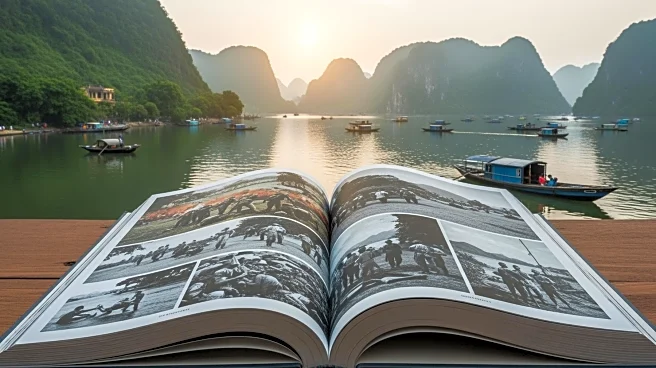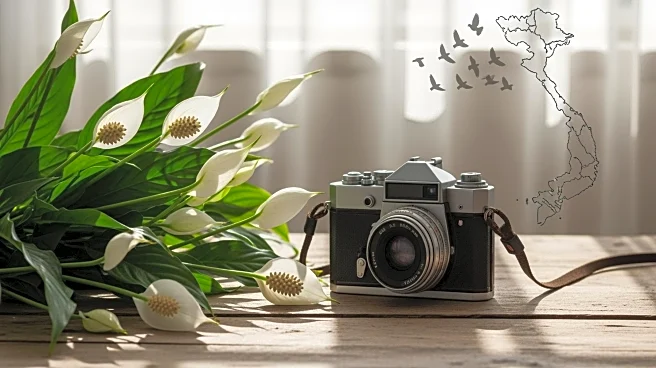What's Happening?
Lon Holmberg, a former military photographer during the Vietnam War, has released a new book titled 'Crossing the Pass of Clouds: An Army Photographer’s Vietnam Journal.' The book is a combination of photo essay
and memoir, featuring 147 black and white images along with Holmberg's reflections on his experiences during one of the last years of intense fighting in Vietnam. Holmberg, who was initially a critic of the war, was drafted and served as the personal photographer for Gen. Creighton Abrams in 1971. His book captures encounters with key figures such as Melvin Laird, Henry Kissinger, and Nguyen Van Thieu, and documents his journeys through dangerous combat zones. The book also includes photos from post-war Vietnam, highlighting the country's transformation over the years.
Why It's Important?
Holmberg's book offers a unique perspective on the Vietnam War, focusing on peace rather than the destruction typically associated with the conflict. This approach provides a different narrative that may resonate with Vietnam veterans and others interested in the historical and personal aspects of the war. By emphasizing moments of quiet and healing, Holmberg's work contributes to the broader understanding of the war's impact and the subsequent reconciliation between the U.S. and Vietnam. The book serves as a reminder of the enduring human spirit and the possibility of peace after conflict, offering insights into the transformation of Vietnam into a vibrant nation.
What's Next?
Holmberg's book invites readers and veterans to engage with the images and reflections, potentially sparking discussions about the war's legacy and the ongoing relationship between the U.S. and Vietnam. As more veterans and historians explore these narratives, there may be further opportunities for reconciliation and understanding. The book could also inspire other veterans to share their stories, contributing to a more comprehensive historical record of the Vietnam War.
Beyond the Headlines
Holmberg's work highlights the ethical and cultural dimensions of war photography, emphasizing the importance of capturing moments that reflect humanity and peace. This approach challenges traditional war narratives and encourages a reevaluation of how conflicts are documented and remembered. The book's focus on peace rather than violence may influence future generations of photographers and historians in their portrayal of war and its aftermath.











